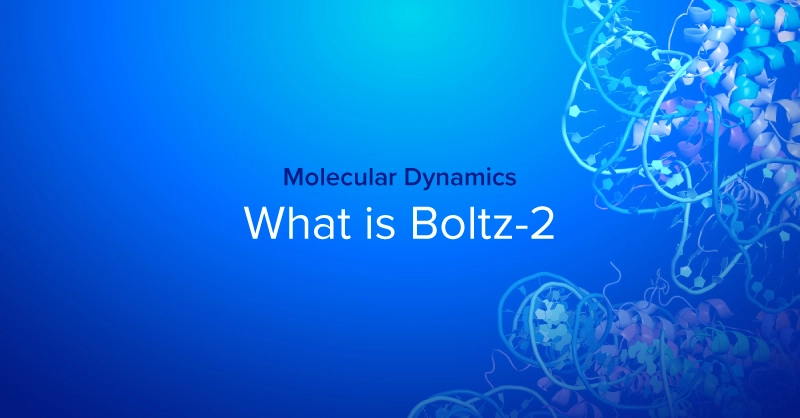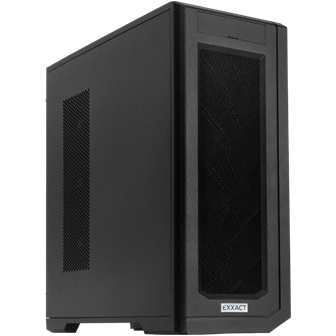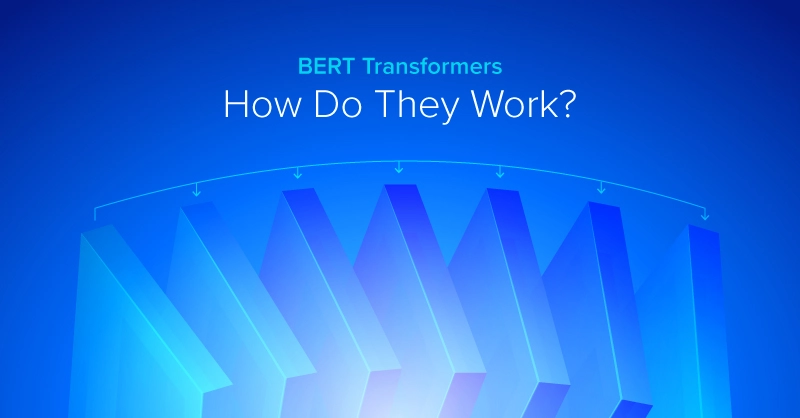
What is Boltz 2 in Protein Folding
Boltz-2 is an open-source AI model for protein folding, molecular interaction, and binding affinity prediction, accelerating drug discovery with transparency and accessibility. Boltz-2 builds upon its predecessor Boltz-1, the most popular open-source alternative to AlphaFold3 used across academia and industry.
Boltz-2 is an all-atom AI model that predicts both the 3D structures and binding affinities of protein, DNA, RNA, and small-molecule complexes. Unlike traditional models that focus only on structure, Boltz-2 lets researchers see how molecules fit together and how strongly they bind, streamlining drug discovery and molecular design.
Boltz-2 Key Capabilities
- Structure + Affinity Prediction: Boltz-2 integrates structure and affinity prediction into a single model speeding up drug discovery and enhances virtual screening and candidate optimization
- High Accuracy: Boltz-2 improves upon Boltz-1 across structure predictions for proteins, DNA, RNA, and complex biomolecular interactions.
- Fast & Efficient: Traditional methods like free-energy perturbation (FEP) simulations are accurate but computationally expensive and time-consuming. Boltz-2 achieves comparable accuracy to FEP while being over 1,000 times faster, making it feasible for large-scale applications.
- Customizable Modeling: Boltz-2 offers enhanced controllability, allowing users to specify experimental methods, apply distance constraints, and integrate multi-chain templates for greater flexibility.
Boltz-2 Defining Characteristics
- Speed and Efficiency: While FEP simulations provide high accuracy, they are resource-intensive and slow. Boltz-2 delivers similar accuracy in a fraction of the time, facilitating rapid screening of large compound libraries.
- Open-Source Accessibility: Boltz-2 is released under an MIT license, ensuring that researchers and developers have free access to the model, weights, and training pipeline. This openness promotes collaboration and innovation in the field of drug discovery.
- Real-World Validation: In benchmarks like the CASP16 affinity challenge, Boltz-2 has outperformed all submitted methods in predicting binding affinities across 140 complexes, demonstrating its practical applicability.
Protein Folding Applications
- Virtual Screening: Boltz-2 can be utilized for hit discovery and lead optimization by accurately predicting binding affinities, thereby identifying promising drug candidates more efficiently.
- Drug Design: The model's ability to predict both structure and affinity aids in designing molecules with optimal binding properties, accelerating the development of effective therapeutics.
- Protein Engineering: Boltz-2's enhanced structural accuracy supports the design of novel proteins and antibodies, contributing to advancements in biotechnology.
Comparing Boltz 2 and AlphaFold 3
Boltz 2 and AlphaFold 3 each advance protein folding research but take different computational approaches.
| Aspect | AlphaFold 3 | Boltz 2 |
| Core Approach | Predicts static 3D structures from amino acid sequences using transformer-based attention models. | Uses a diffusion-based framework to simulate the folding process and capture multiple conformations. |
| Data Dependence | Relies on evolutionary data and multiple sequence alignments to improve accuracy. | Reduces that dependence, producing strong predictions even from limited sequence data. |
| Scientific Focus | Excels at providing high-precision, single-structure predictions. | Emphasizes folding dynamics and structural flexibility, making it valuable for studying molecular interactions. |
| Hardware Demands | Does not scale past one GPU. Benefits from high GPU memory and throughput. | Benefits from high GPU memory and throughput. |
Together, these models highlight how advancements in GPU-accelerated computing are enabling new levels of accuracy and realism in protein structure prediction.
Frequently Asked Questions for Boltz-2
What is Boltz-2, and how does it differ from previous Boltz models?
Boltz-2 is an open-source protein structure prediction model that builds on earlier Boltz versions with improved accuracy in predicting protein-ligand complexes, antibody-antigen interactions, and multi-chain assemblies using diffusion-based methods.
How does Boltz-2 compare to AlphaFold 3 in terms of accuracy?
Boltz-2 achieves competitive accuracy with AlphaFold 3 on protein structure prediction benchmarks, particularly excelling at protein-ligand binding pose prediction and offering an open-source alternative to AlphaFold 3's proprietary model.
What kind of data or inputs does Boltz-2 require?
Boltz-2 accepts protein sequences, small molecule SMILES strings, and nucleic acid sequences. It can predict structures for individual proteins, protein complexes, protein-ligand interactions, and covalent modifications.
What are the main computational differences between Boltz-2 and AlphaFold 3?
Both use transformer-based architectures, but Boltz-2 employs a diffusion model framework for structure generation. Boltz-2 is fully open-source under MIT license, while AlphaFold 3's weights and training details remain restricted.
Which use cases are best suited for Boltz-2?
Boltz-2 excels at drug discovery applications including protein-ligand docking, antibody design, structure-based virtual screening, and predicting binding modes—making it valuable for academic and commercial research.
How does the release of Boltz-2 impact the future of computational biology?
Boltz-2 democratizes access to state-of-the-art protein structure prediction by providing an open-source alternative to proprietary models, accelerating innovation in structural biology, drug design, and therapeutic development.
Conclusion
For researchers and organizations working in drug discovery, Boltz-2 offers a practical path forward: screen thousands of compounds in hours instead of weeks, prioritize leads with confidence using binding affinity predictions, and integrate the model directly into existing computational pipelines without licensing barriers.
Teams can deploy Boltz-2 to validate hits from high-throughput screens, optimize antibody therapeutics, or engineer proteins with desired binding properties, while maintaining full control over their data and workflows. Configure an Exxact workstation for your lab or expand your computing infrastructure with a GPU server and request Boltz-2 and any other application to be preloaded into your system.

We're Here to Deliver the Tools to Power Your Research
With access to the highest-performing hardware and industry experts, Exxact offers platforms optimized for your Life Science reseach deployment, budget, and desired performance so you can continue your groundbreaking innovations.
Configure your Protein Folding System Today
What is Boltz-2?
What is Boltz 2 in Protein Folding
Boltz-2 is an open-source AI model for protein folding, molecular interaction, and binding affinity prediction, accelerating drug discovery with transparency and accessibility. Boltz-2 builds upon its predecessor Boltz-1, the most popular open-source alternative to AlphaFold3 used across academia and industry.
Boltz-2 is an all-atom AI model that predicts both the 3D structures and binding affinities of protein, DNA, RNA, and small-molecule complexes. Unlike traditional models that focus only on structure, Boltz-2 lets researchers see how molecules fit together and how strongly they bind, streamlining drug discovery and molecular design.
Boltz-2 Key Capabilities
- Structure + Affinity Prediction: Boltz-2 integrates structure and affinity prediction into a single model speeding up drug discovery and enhances virtual screening and candidate optimization
- High Accuracy: Boltz-2 improves upon Boltz-1 across structure predictions for proteins, DNA, RNA, and complex biomolecular interactions.
- Fast & Efficient: Traditional methods like free-energy perturbation (FEP) simulations are accurate but computationally expensive and time-consuming. Boltz-2 achieves comparable accuracy to FEP while being over 1,000 times faster, making it feasible for large-scale applications.
- Customizable Modeling: Boltz-2 offers enhanced controllability, allowing users to specify experimental methods, apply distance constraints, and integrate multi-chain templates for greater flexibility.
Boltz-2 Defining Characteristics
- Speed and Efficiency: While FEP simulations provide high accuracy, they are resource-intensive and slow. Boltz-2 delivers similar accuracy in a fraction of the time, facilitating rapid screening of large compound libraries.
- Open-Source Accessibility: Boltz-2 is released under an MIT license, ensuring that researchers and developers have free access to the model, weights, and training pipeline. This openness promotes collaboration and innovation in the field of drug discovery.
- Real-World Validation: In benchmarks like the CASP16 affinity challenge, Boltz-2 has outperformed all submitted methods in predicting binding affinities across 140 complexes, demonstrating its practical applicability.
Protein Folding Applications
- Virtual Screening: Boltz-2 can be utilized for hit discovery and lead optimization by accurately predicting binding affinities, thereby identifying promising drug candidates more efficiently.
- Drug Design: The model's ability to predict both structure and affinity aids in designing molecules with optimal binding properties, accelerating the development of effective therapeutics.
- Protein Engineering: Boltz-2's enhanced structural accuracy supports the design of novel proteins and antibodies, contributing to advancements in biotechnology.
Comparing Boltz 2 and AlphaFold 3
Boltz 2 and AlphaFold 3 each advance protein folding research but take different computational approaches.
| Aspect | AlphaFold 3 | Boltz 2 |
| Core Approach | Predicts static 3D structures from amino acid sequences using transformer-based attention models. | Uses a diffusion-based framework to simulate the folding process and capture multiple conformations. |
| Data Dependence | Relies on evolutionary data and multiple sequence alignments to improve accuracy. | Reduces that dependence, producing strong predictions even from limited sequence data. |
| Scientific Focus | Excels at providing high-precision, single-structure predictions. | Emphasizes folding dynamics and structural flexibility, making it valuable for studying molecular interactions. |
| Hardware Demands | Does not scale past one GPU. Benefits from high GPU memory and throughput. | Benefits from high GPU memory and throughput. |
Together, these models highlight how advancements in GPU-accelerated computing are enabling new levels of accuracy and realism in protein structure prediction.
Frequently Asked Questions for Boltz-2
What is Boltz-2, and how does it differ from previous Boltz models?
Boltz-2 is an open-source protein structure prediction model that builds on earlier Boltz versions with improved accuracy in predicting protein-ligand complexes, antibody-antigen interactions, and multi-chain assemblies using diffusion-based methods.
How does Boltz-2 compare to AlphaFold 3 in terms of accuracy?
Boltz-2 achieves competitive accuracy with AlphaFold 3 on protein structure prediction benchmarks, particularly excelling at protein-ligand binding pose prediction and offering an open-source alternative to AlphaFold 3's proprietary model.
What kind of data or inputs does Boltz-2 require?
Boltz-2 accepts protein sequences, small molecule SMILES strings, and nucleic acid sequences. It can predict structures for individual proteins, protein complexes, protein-ligand interactions, and covalent modifications.
What are the main computational differences between Boltz-2 and AlphaFold 3?
Both use transformer-based architectures, but Boltz-2 employs a diffusion model framework for structure generation. Boltz-2 is fully open-source under MIT license, while AlphaFold 3's weights and training details remain restricted.
Which use cases are best suited for Boltz-2?
Boltz-2 excels at drug discovery applications including protein-ligand docking, antibody design, structure-based virtual screening, and predicting binding modes—making it valuable for academic and commercial research.
How does the release of Boltz-2 impact the future of computational biology?
Boltz-2 democratizes access to state-of-the-art protein structure prediction by providing an open-source alternative to proprietary models, accelerating innovation in structural biology, drug design, and therapeutic development.
Conclusion
For researchers and organizations working in drug discovery, Boltz-2 offers a practical path forward: screen thousands of compounds in hours instead of weeks, prioritize leads with confidence using binding affinity predictions, and integrate the model directly into existing computational pipelines without licensing barriers.
Teams can deploy Boltz-2 to validate hits from high-throughput screens, optimize antibody therapeutics, or engineer proteins with desired binding properties, while maintaining full control over their data and workflows. Configure an Exxact workstation for your lab or expand your computing infrastructure with a GPU server and request Boltz-2 and any other application to be preloaded into your system.

We're Here to Deliver the Tools to Power Your Research
With access to the highest-performing hardware and industry experts, Exxact offers platforms optimized for your Life Science reseach deployment, budget, and desired performance so you can continue your groundbreaking innovations.
Configure your Protein Folding System Today



.jpg?format=webp)